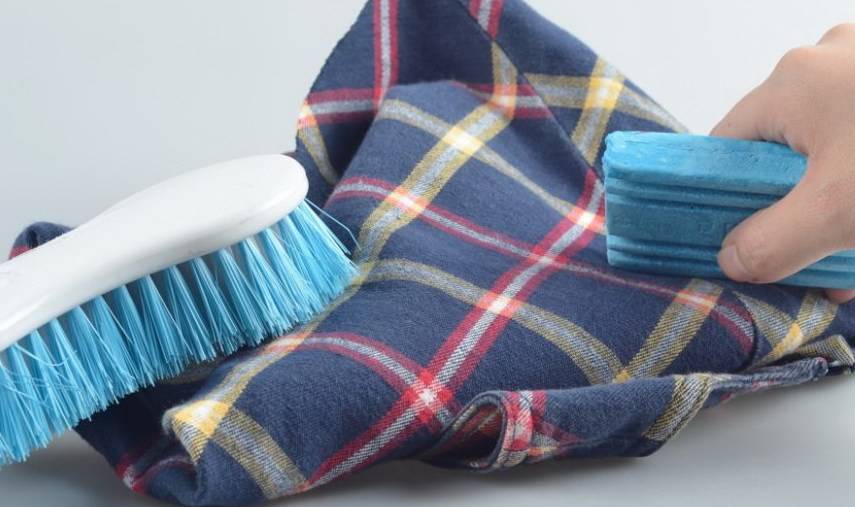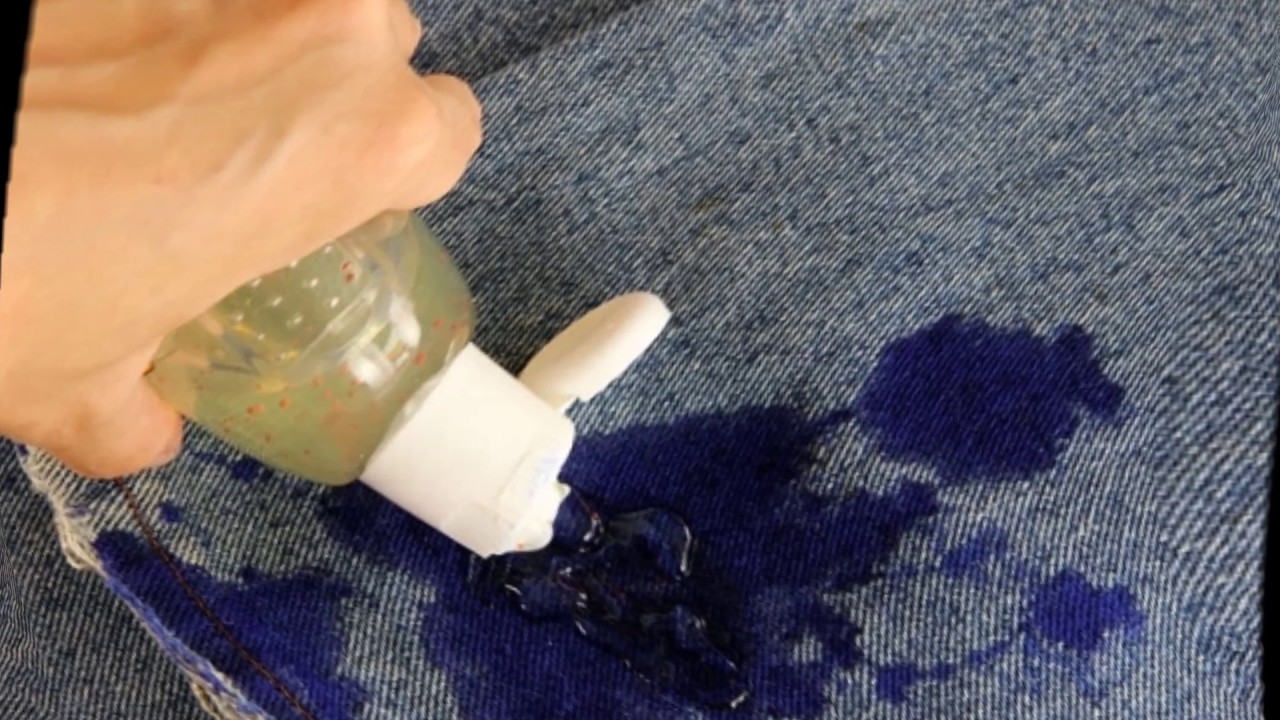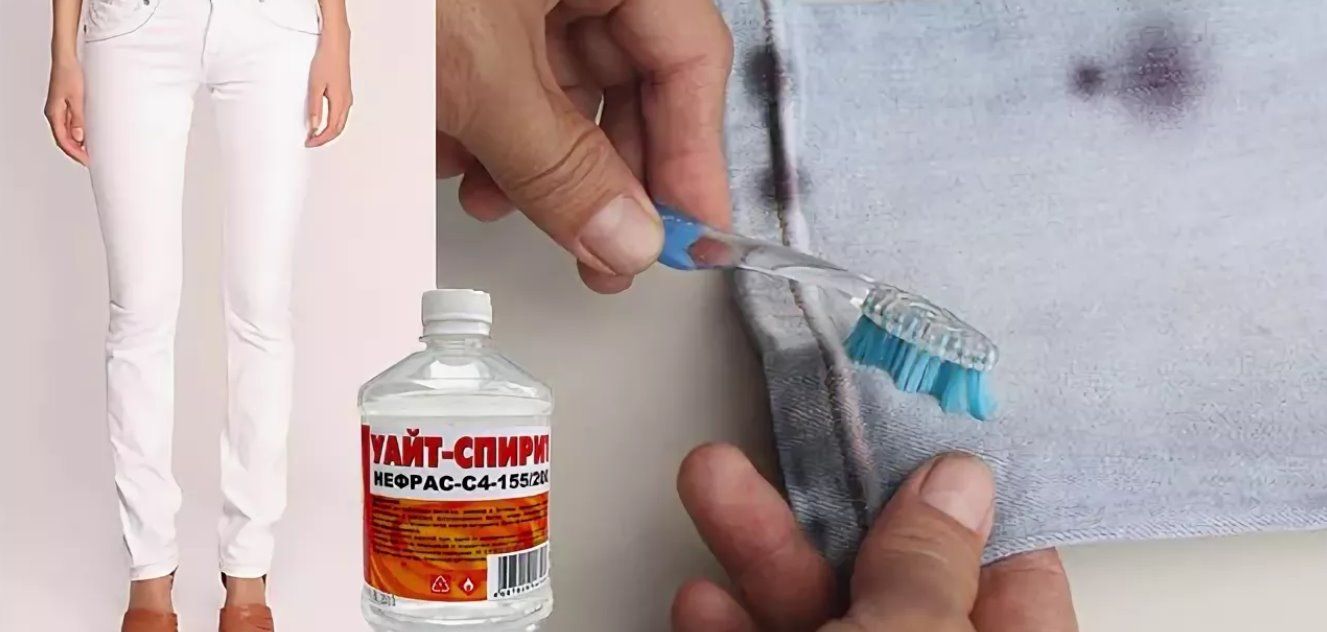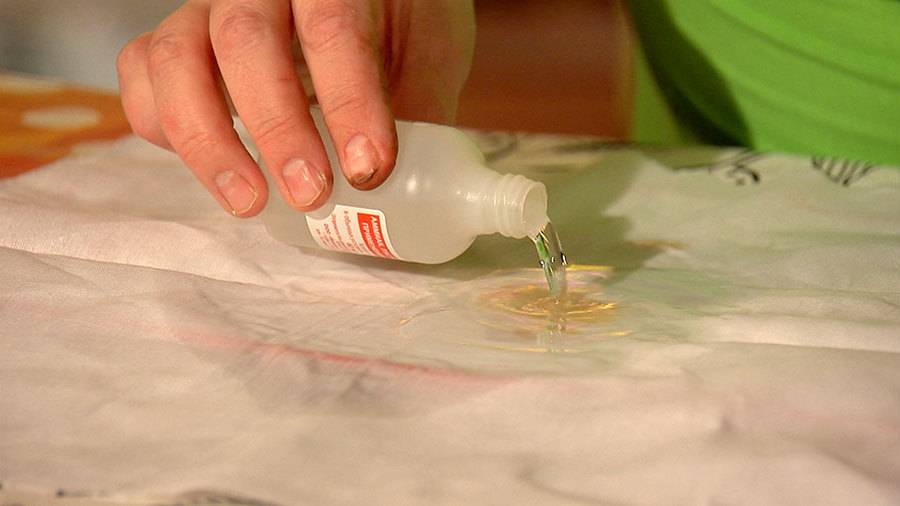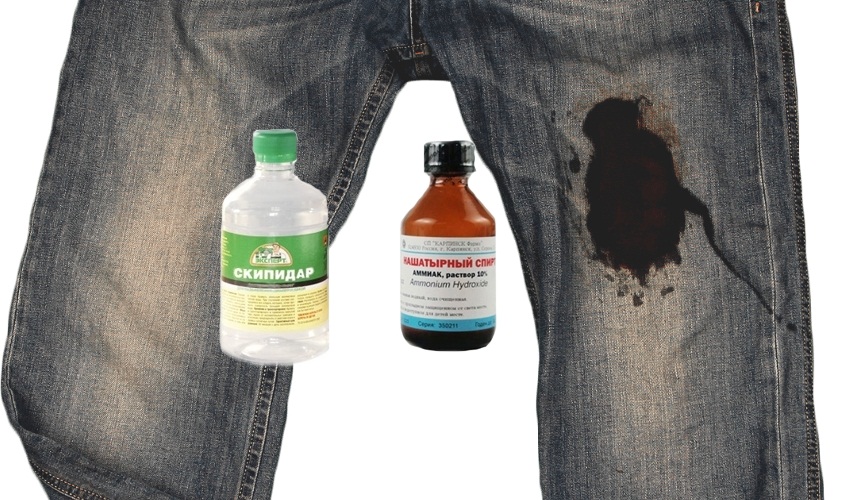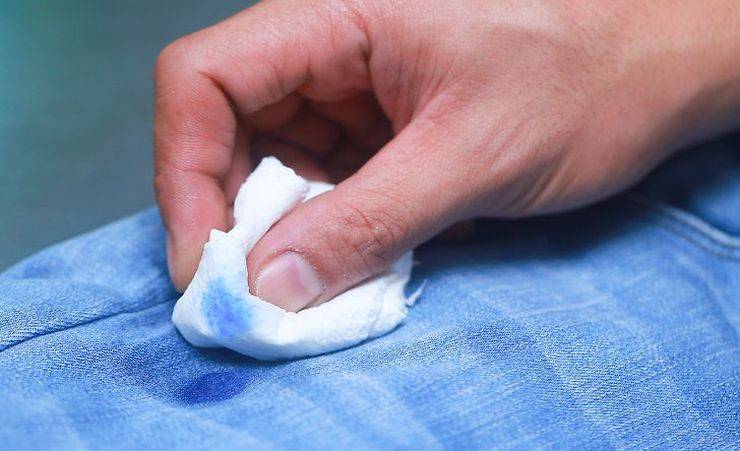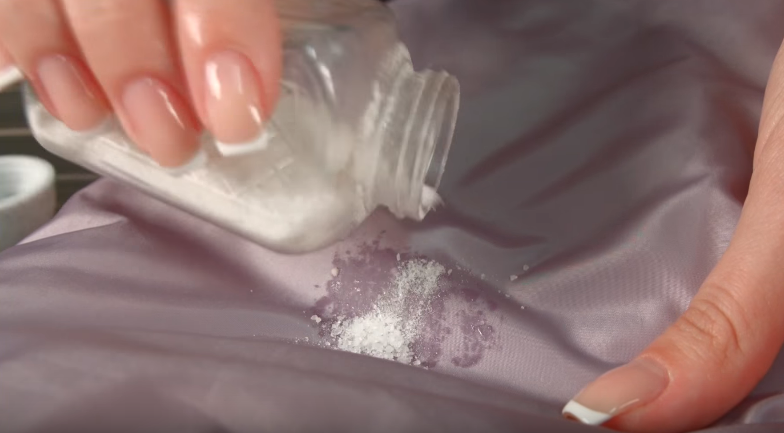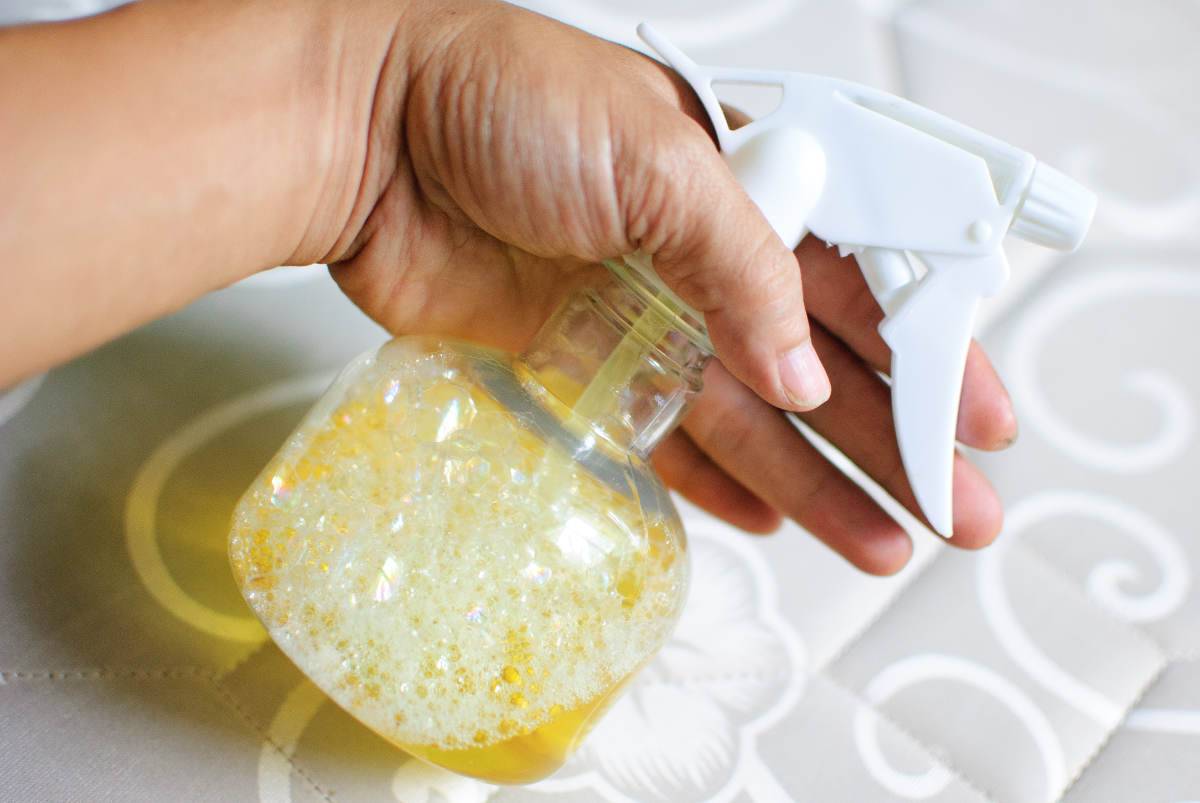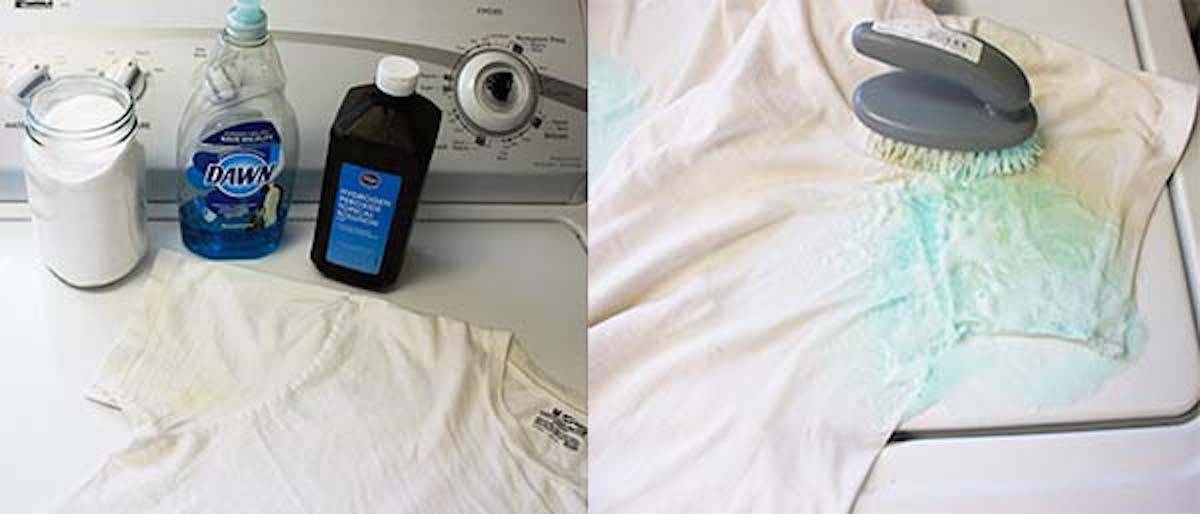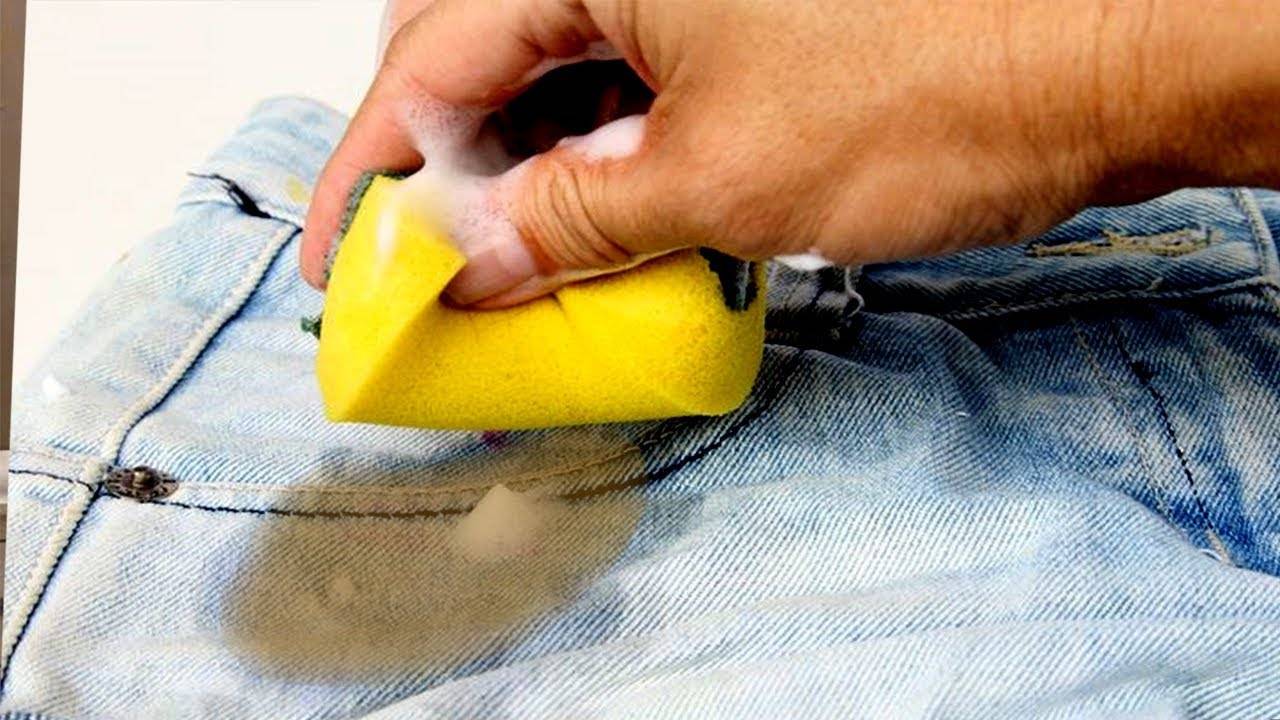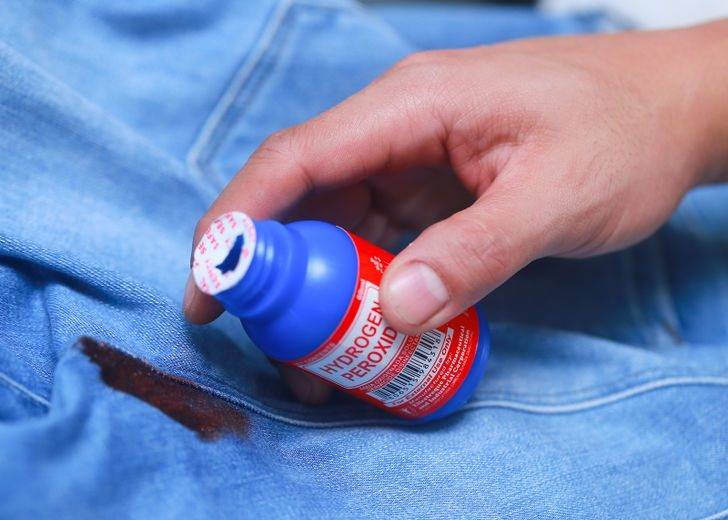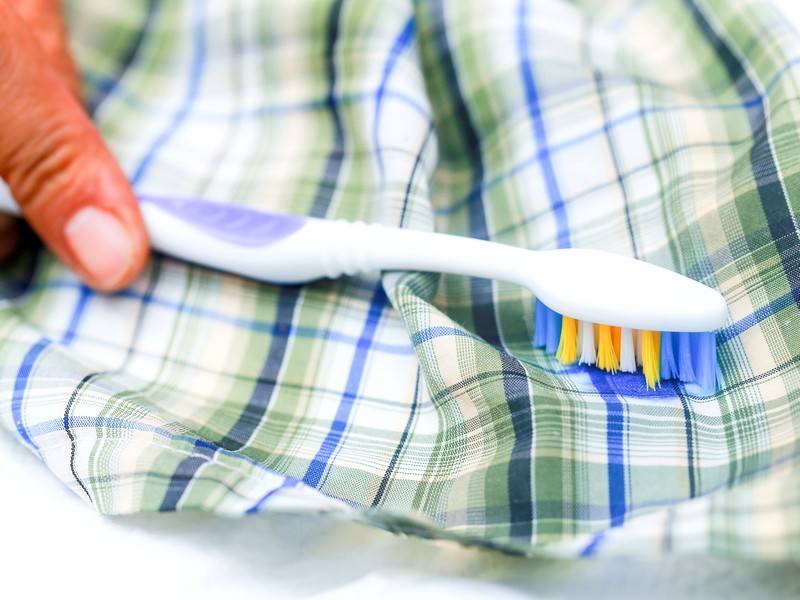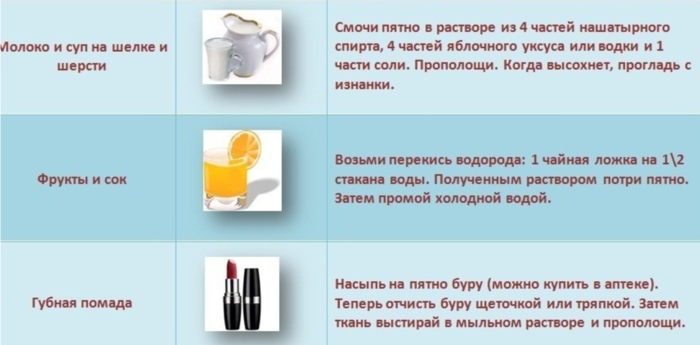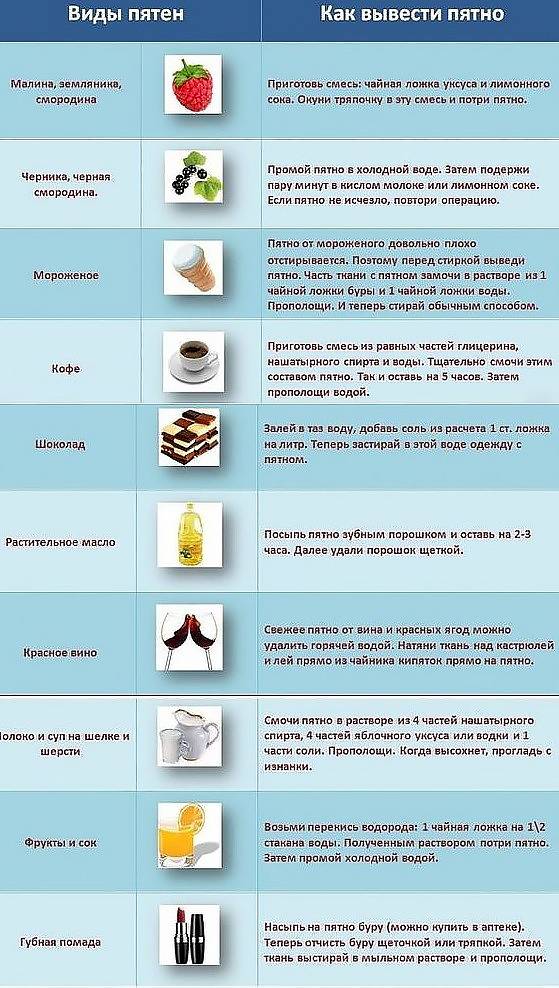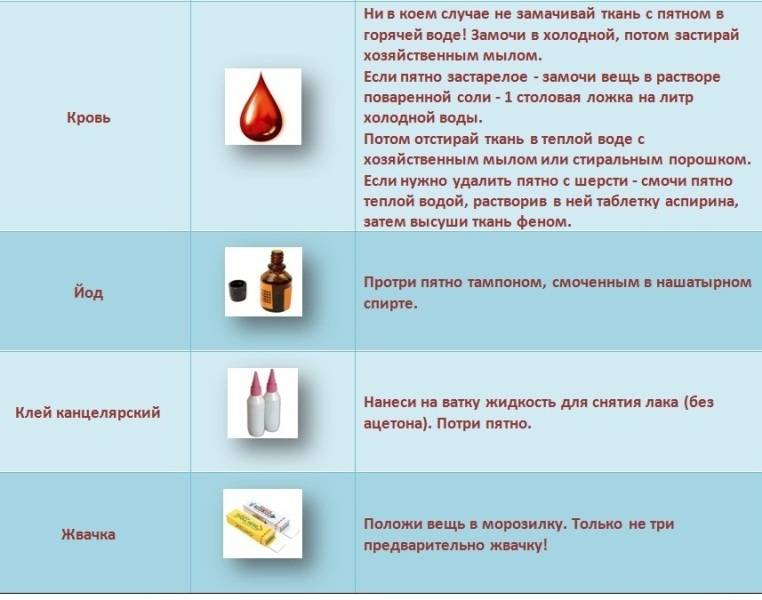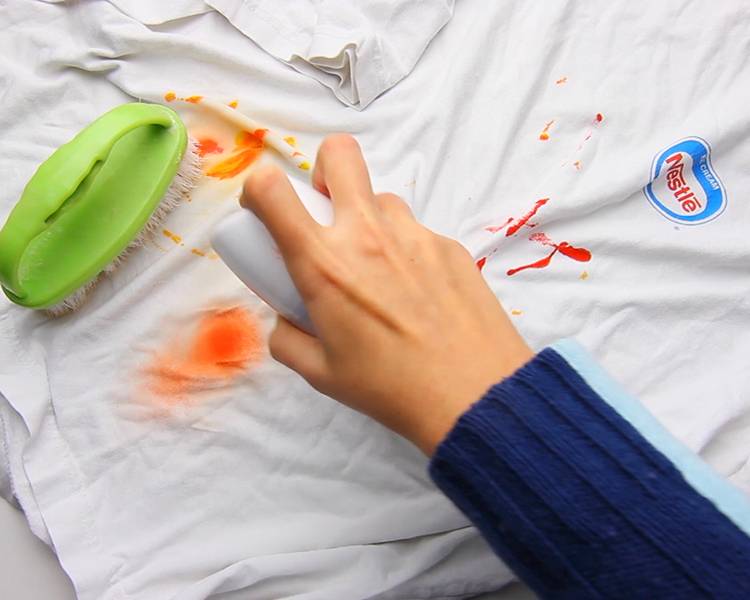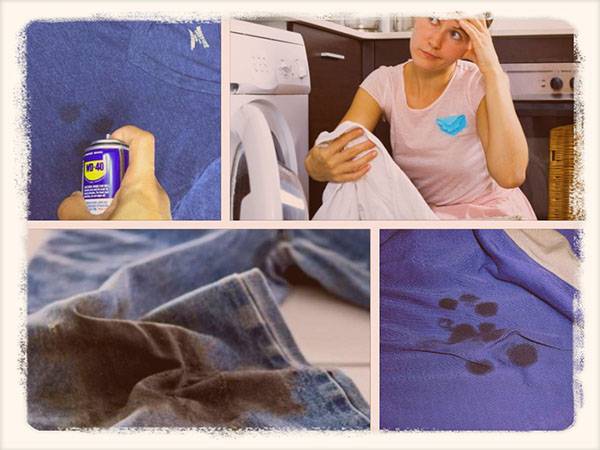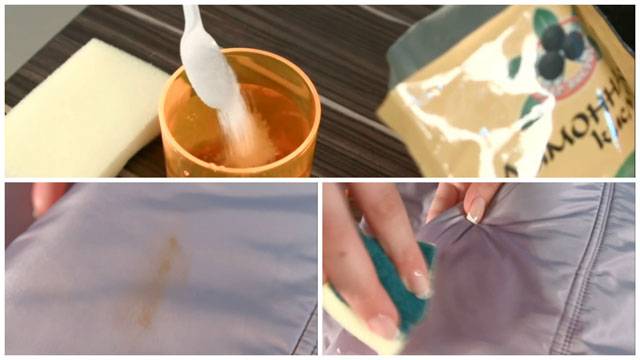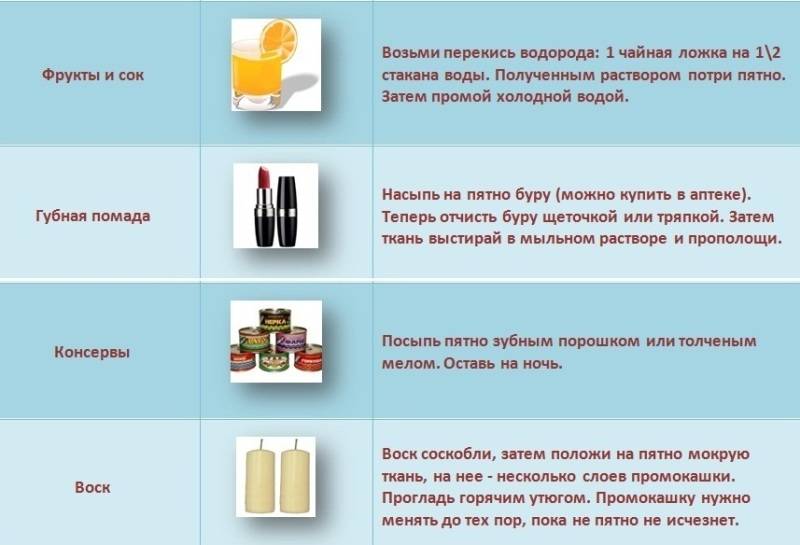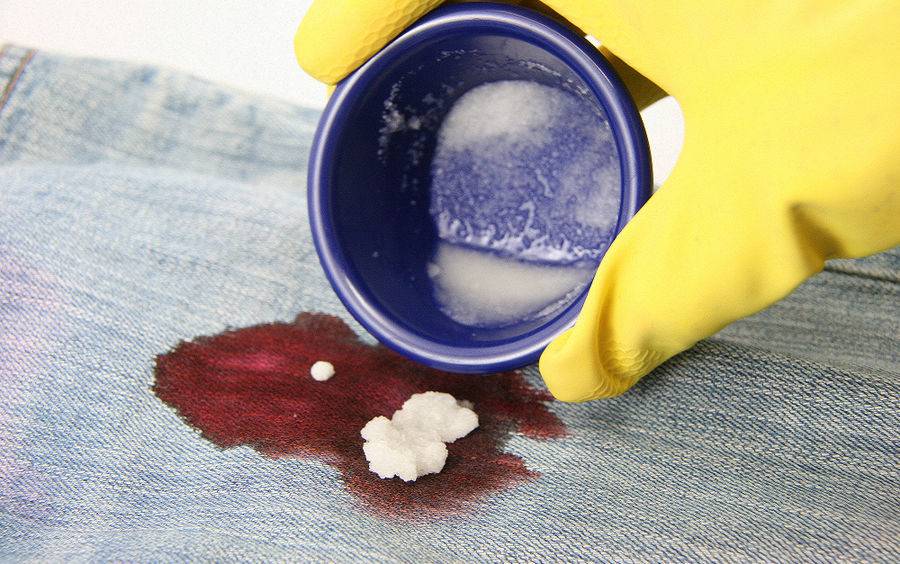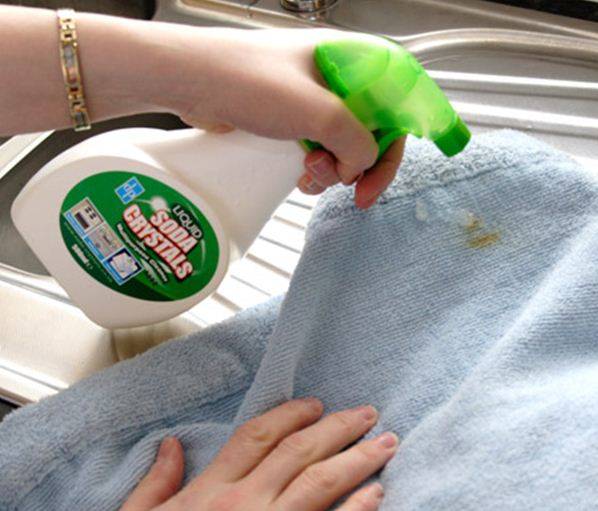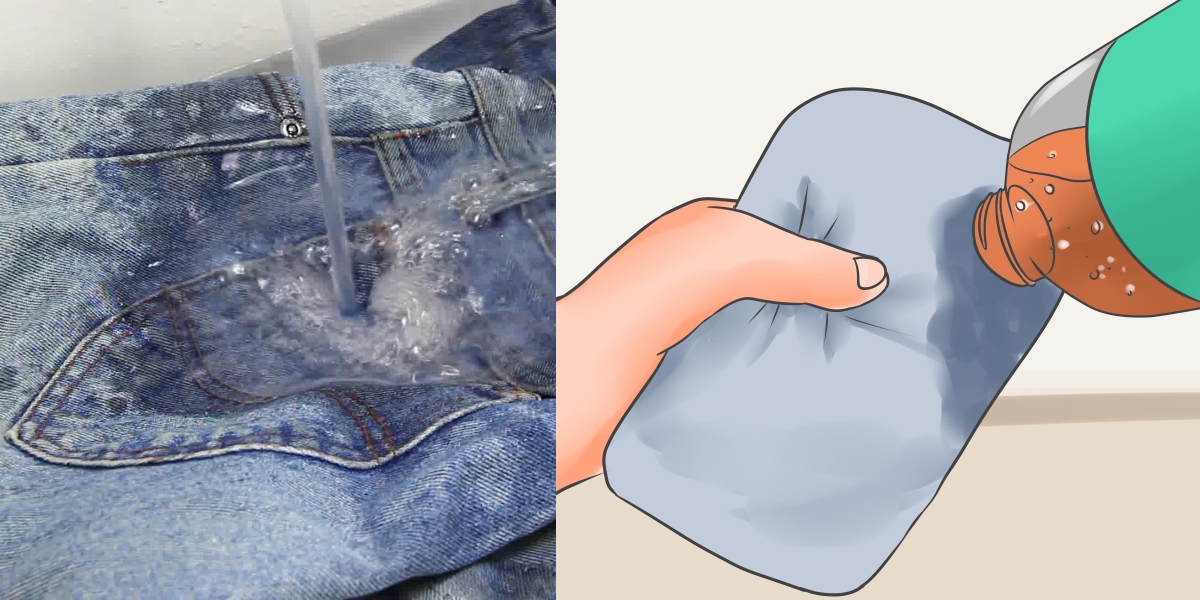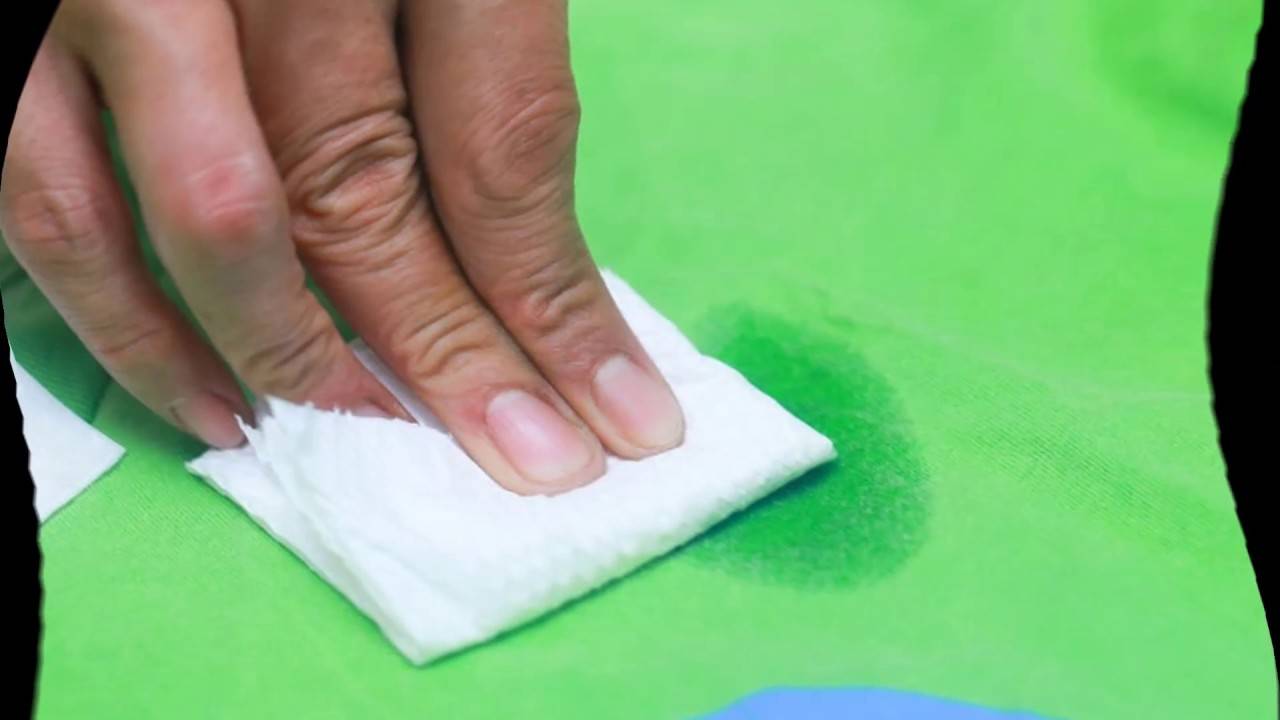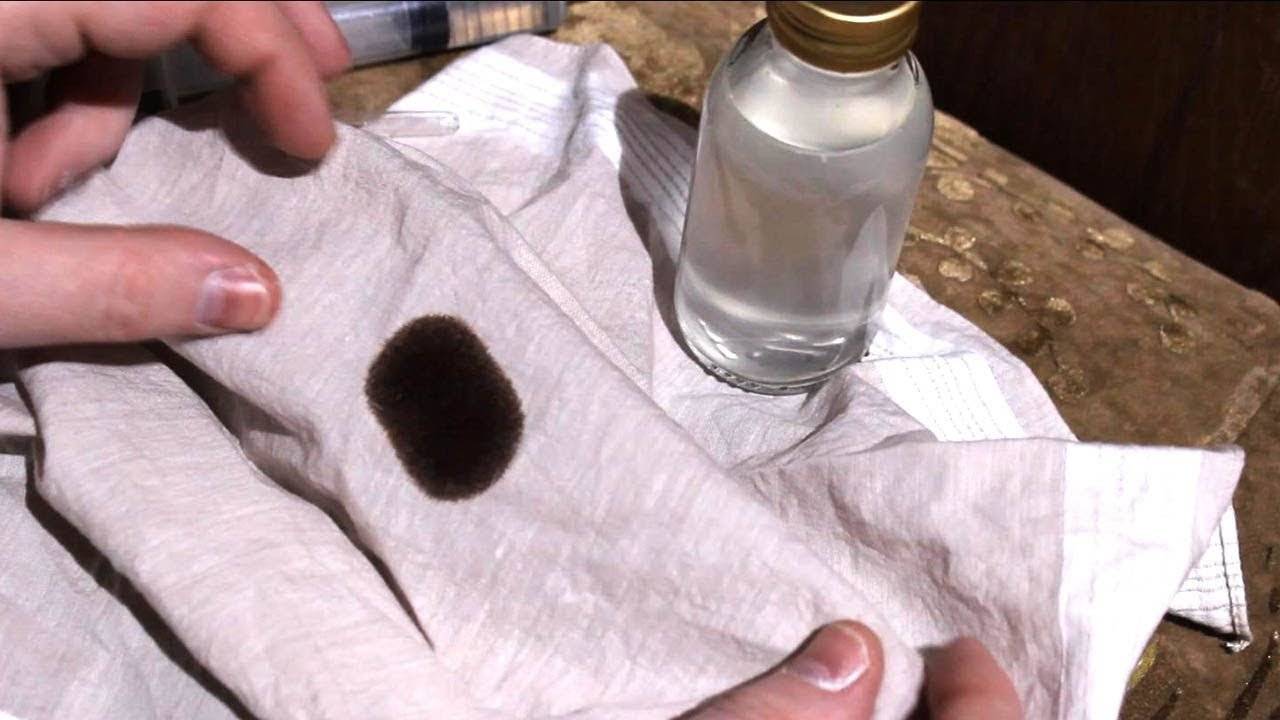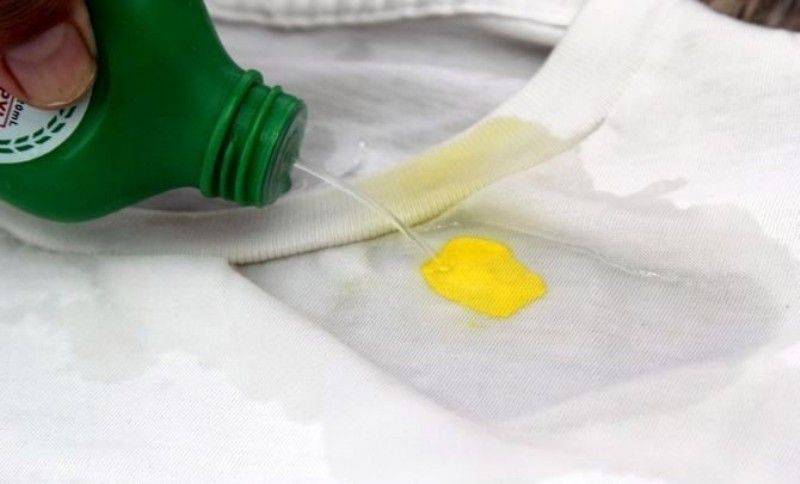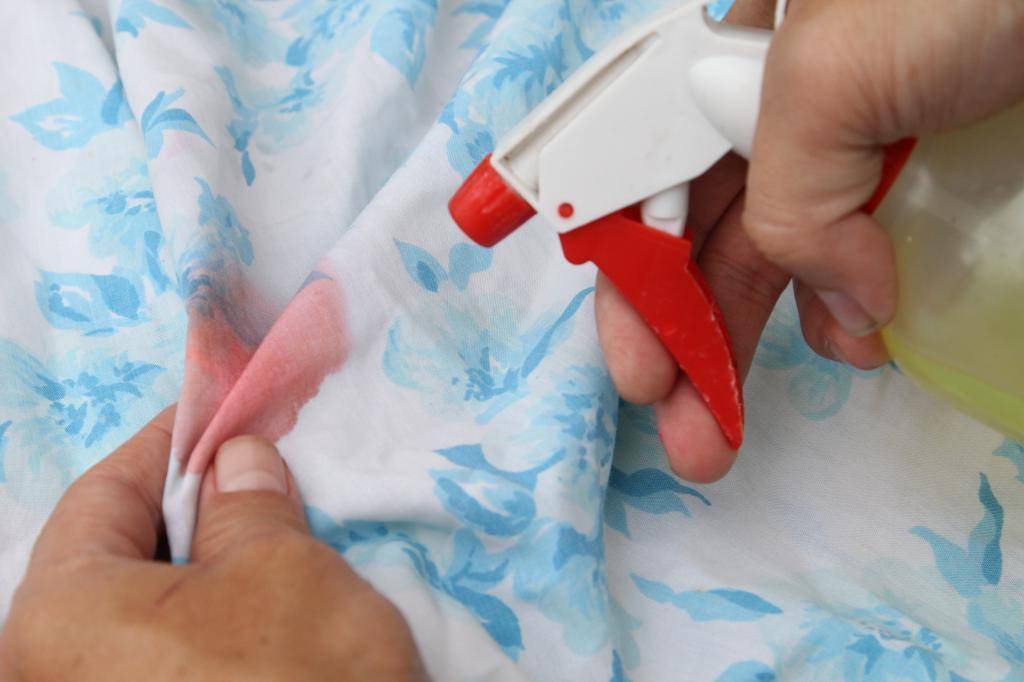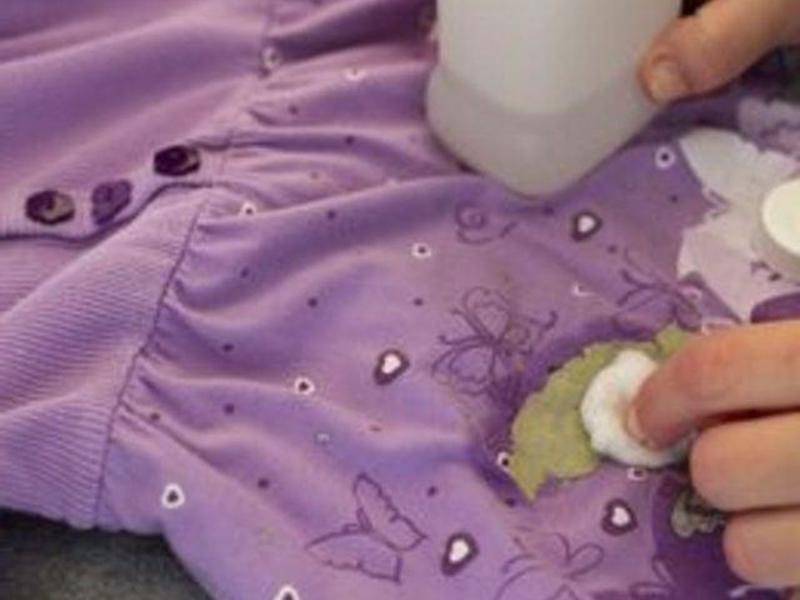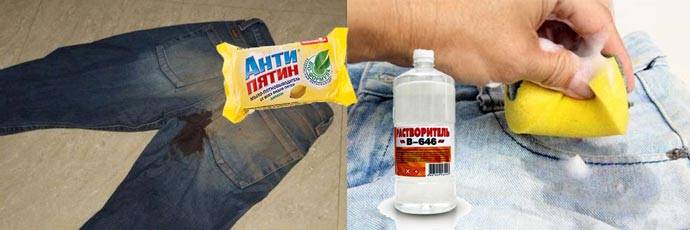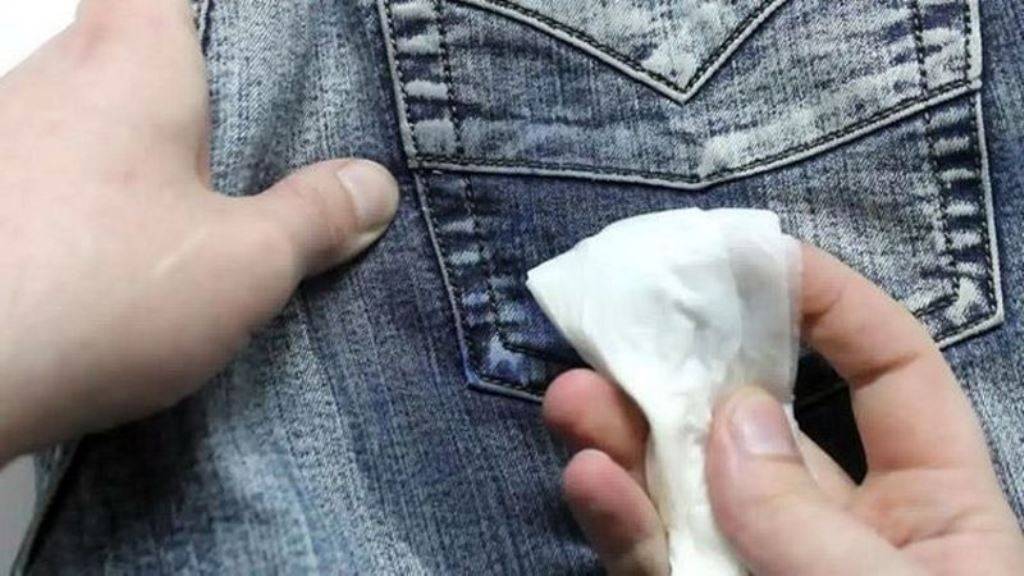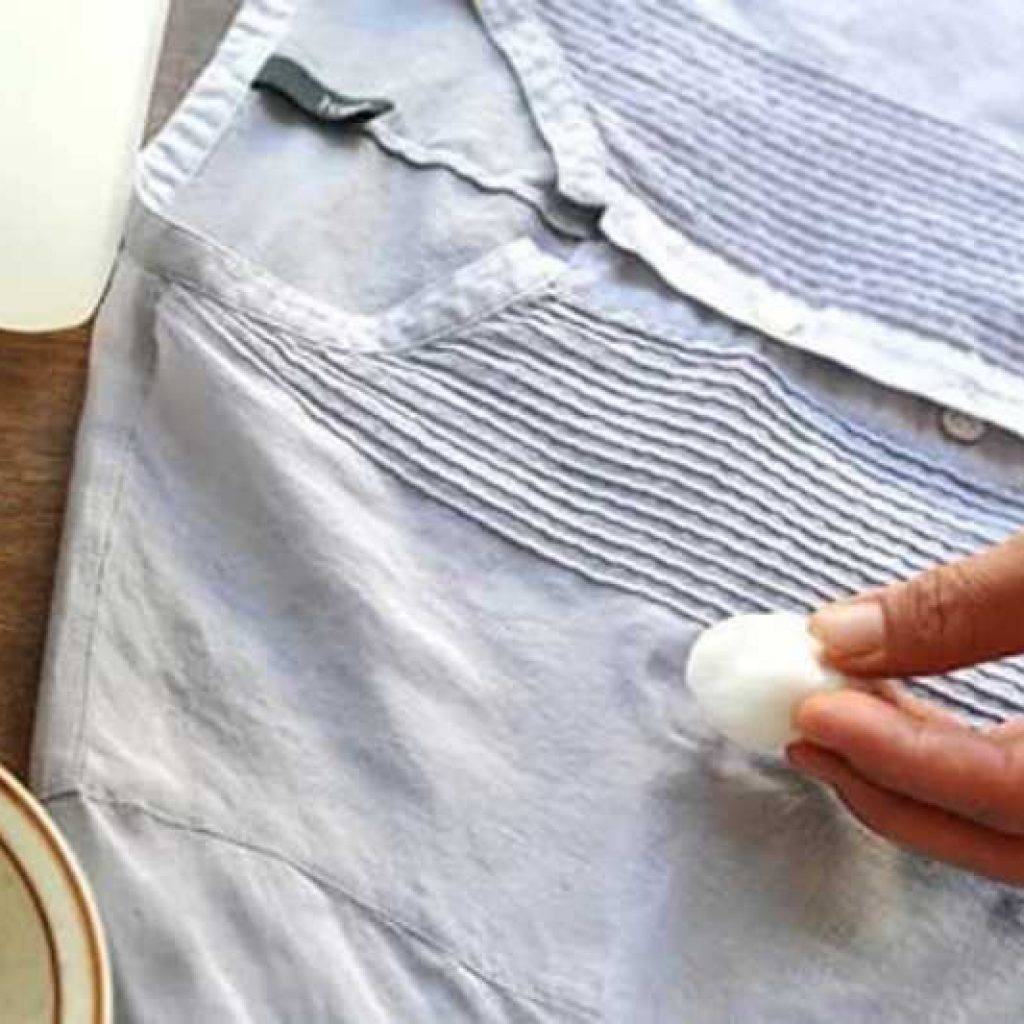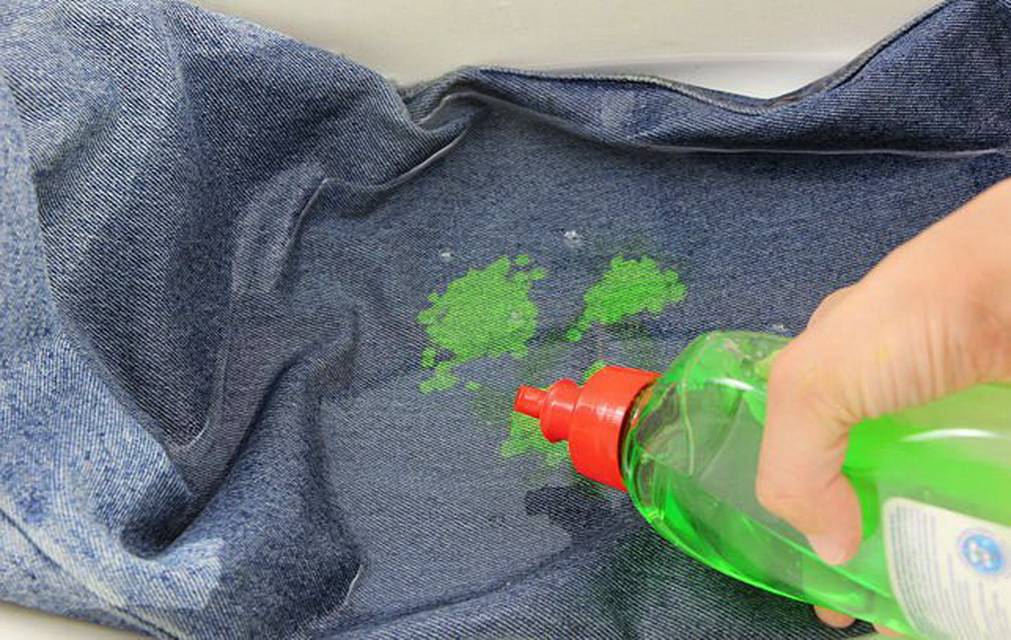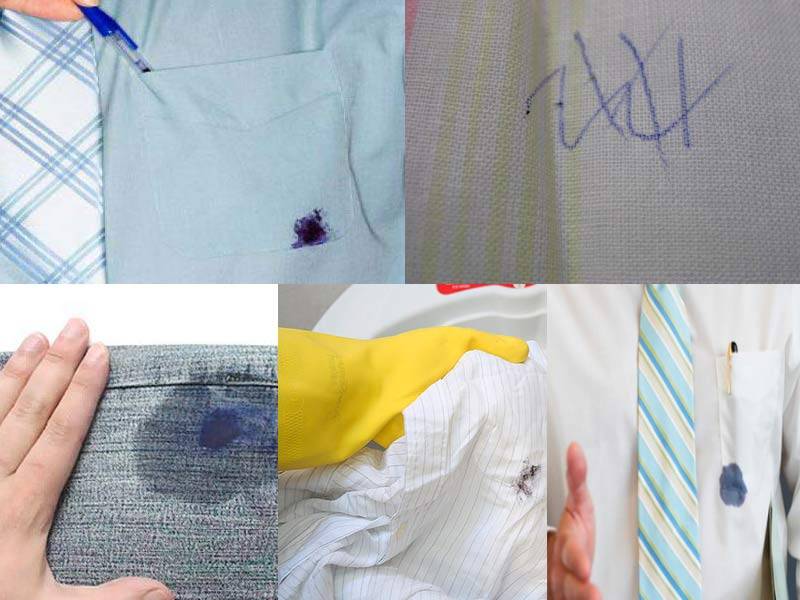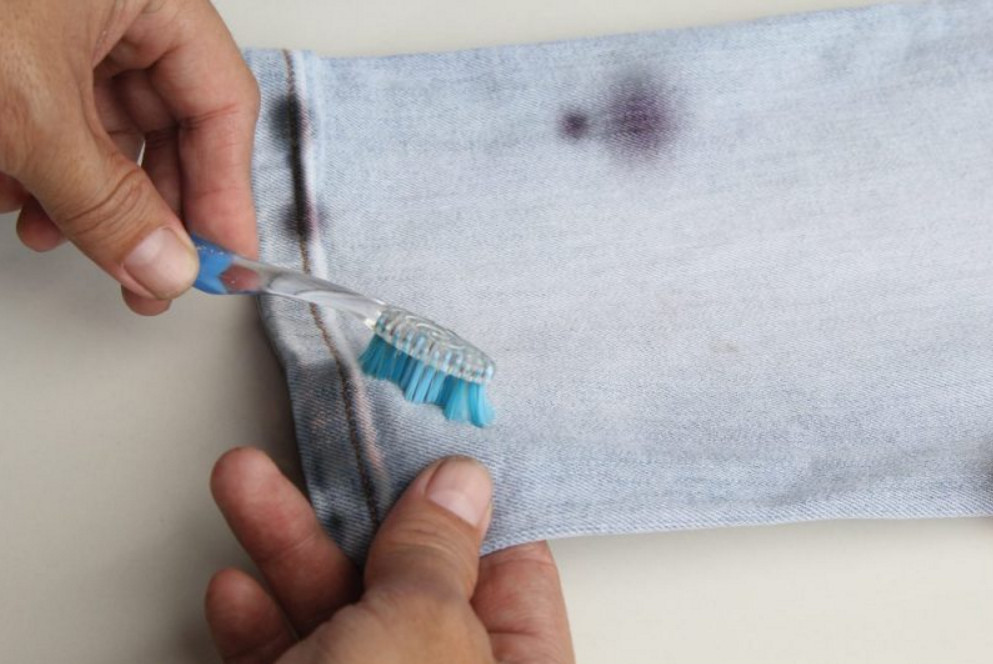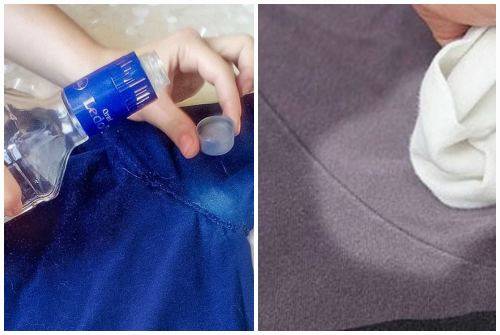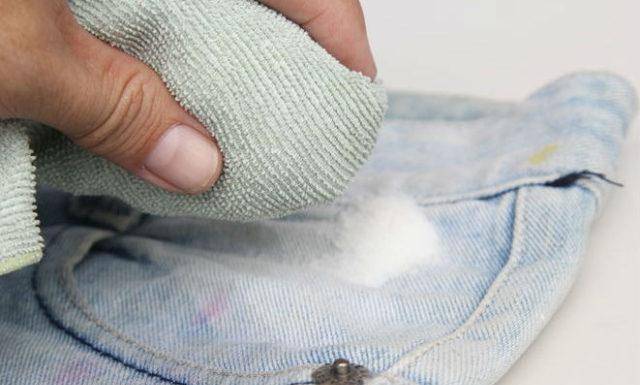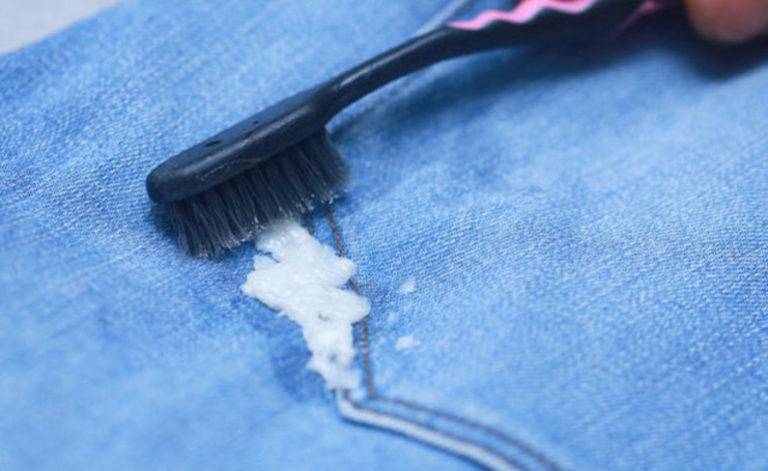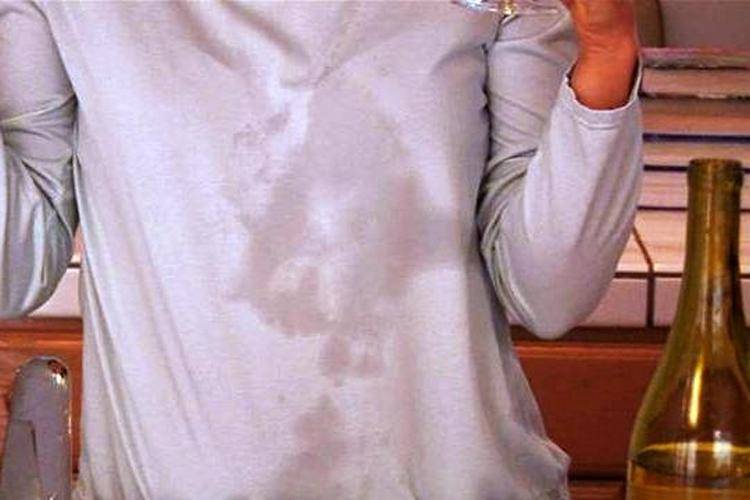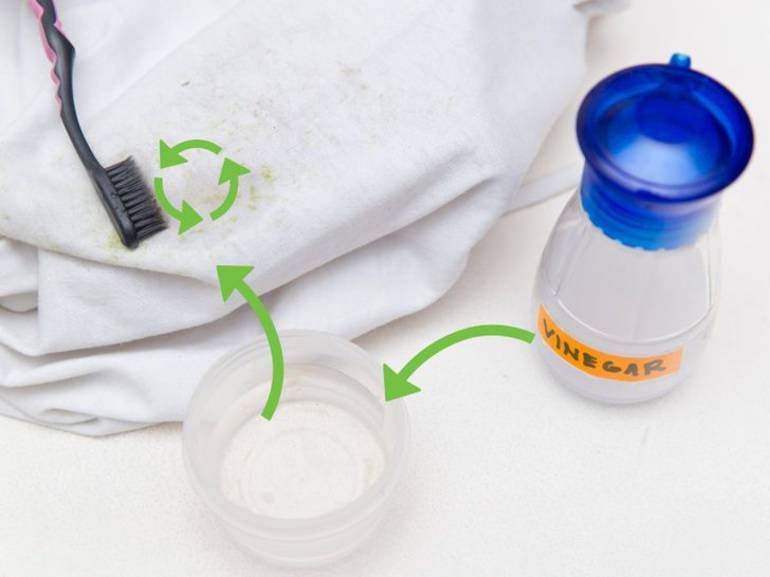How to remove lipstick from clothes
Considering that the bulk of the lipsticks used are made on a fat basis, then when considering how to remove lipstick from clothes, it is necessary to proceed, first of all, from the fact that it is necessary to use means that actively break down and neutralize fats.
Of course, the simplest and most affordable way would be to use laundry soap or any dish detergent to remove such a stain. But this method is not always applicable, since it ultimately involves washing the entire soiled thing, and this is not always possible to do right away.
In this case, ethyl alcohol, gasoline, acetone or ammonia can help to quickly and efficiently remove lipstick from clothes. Use a cotton swab or a cloth dampened with one of these products to wipe the lipstick stain until it disappears completely. To cope with stains that may remain on the fabric after removing contamination in this way, and partly from the specific smell of gasoline, acetone or ammonia, table vinegar will help.
If you have enough time to remove the lipstick stain, lemon juice and baking soda will work well. Both ingredients must be mixed until a pasty state, applied to the contaminated area and allowed to dry well. After that, the soda must be shaken off the clothes, the remnants are cleaned with a brush and the lipstick will be completely removed. Considering that under the influence of citric acid and soda, the paint on clothes may lighten a little, this method is undesirable to use for cleaning colored clothes.
Hydrogen peroxide will do a great job of removing lipstick stains on light-colored clothes, as it itself has a whitening effect. The place of contamination should be moistened with peroxide several times until the lipstick completely disappears from the fabric. Then the clothes cleaned in this way should be washed, preferably with the use of laundry soap, or at least wash the treated area with it.
If there is no hydrogen peroxide at hand, you can also use bleach for linen for these purposes, but you should act with extreme caution, remembering that a colored item can irretrievably shed.
Lightly warmed liquid glycerin can also be quite effective in removing lipstick stains from clothing. For this, glycerin should be applied to the place of pollution, then after 2-3 hours it should be washed off with salted water. Lipstick from fabric will disappear without a trace.
In the case when it is not advisable to not only wash clothes contaminated with lipstick, but even wet it abundantly, turpentine will help to cope with the task that has arisen, since it is an active solvent of fats. It must be applied to the contaminated area of the fabric in such a way that it is thoroughly saturated. After that, a loose paper towel should be laid on and under the stain treated in this way and through it, iron the contaminated area on the clothes with a hot iron. Under the influence of the hot temperature, the turpentine, together with the dissolved lipstick, will completely transfer to the napkin and the fabric will be cleansed.
How to remove dried blood from clothes
If traces have formed a long time ago, then you must first treat the wet linen with laundry soap. After washing with hands, and then soak with hydrogen peroxide, rinse and send to the machine. Usually, this method will help clear the blood from the bedding.
It will take a lot of effort to remove dried blood.
Removing dried blood from clothing takes a lot of effort, and often in vain. Sometimes it eats into the fabric so that even the most powerful modern means cannot cope with it. But you don't need to get upset ahead of time, just do the following:
It is imperative to soak your clothes, as you remember, you can only soak in cold water. Dark clothes are soaked in clean water, while for light clothes it is best to use a mild saline solution. The duration of the soak can vary. For dark clothes, a few minutes are enough, and sometimes it will take several hours to lie in the water. Light - you need to stay in the saline solution for at least 12 hours.
Try to wash it off with laundry soap. After soaking, the old blood stains will certainly not go anywhere, so the next step should be to try to wash them off with laundry soap. The successful outcome will depend on the age of the stain, its size and the fabric of the garment. one tissue absorbs blood very well and it becomes almost impossible to remove it, while the other almost does not absorb and is cleaned very easily
Use hydrogen peroxide - Hydrogen peroxide works well for removing blood stains, but it should be used with great care. at the same time, it can whiten or even disrupt the texture of the fabric
Before applying peroxide, check its effect on the fabric somewhere on an inconspicuous area, if everything is in order - you can apply. Method for removing blood with peroxide. Pour pure peroxide over the stain (for delicate fabrics, mix in half with water). A reaction will start and foam will appear at the application site. Wipe it off with a clean cloth or sponge. Repeat the procedure until the spot disappears completely. If your clothes are heavily stained with blood, soak them in a bowl of hydrogen peroxide for 10-20 minutes. Then wash the item with laundry soap and cold water.
Toothpaste is good for removing blood stains. For items that can be washed in the washing machine, you can try using toothpaste. It does a good job of removing dried blood stains. Use a toothbrush to apply any toothpaste to the stained area, let it dry, and then wash in cold water. The procedure can be repeated if necessary. After removing the stain, clothes are washed with soap or powder.
Although stains are harder to remove if the substance is already dry, in most cases it is possible.
Be sure to read:
How to remove underarm sweat and deodorant marks on black, white, and colored clothing
It is recommended to use one of the following methods:
- Soak the product in a saline solution in the proportion of 1 tablespoon of salt for every liter of water. Wash the item with powder in the morning.
- Pour hydrogen peroxide over the stain. After 10-15 minutes, wipe the contaminated area with a cotton sponge. The method is applicable exclusively for dense fabrics.
- Soak the item in a solution of ammonia (1 tablespoon of ammonia per 1 liter of water). Wipe the remaining stains with a cotton pad moistened with liquid.
- Dissolve 25 grams of salt in 2 glasses of water. Pour the product. After 20-30 minutes, wash the thing in the usual way using powder or soap.
- Apply a mixture of starch and water in a 1: 2 ratio on the bloody footprints. Once dry, wipe off the old stain with a rag or napkin. The method is suitable for delicate items.
- Wipe off the contamination with a cotton swab soaked in heated liquid glycerin. Wash as usual. Suitable for dense (denim) fabrics.
- Use a stain remover or oxygen bleach. It is necessary to use the product immediately before washing, strictly according to the instructions.
We clean the sofa from blood stains
Removing blood from a sofa is much more difficult than washing it off a wardrobe. The upholstery cannot be removed and washed. But it is possible to cope with bloody stains on furniture.
Universal soap solution
This method will be relevant if the dirt has appeared quite recently. It is versatile because it is suitable for all types of upholstery. Cleaning steps:
- Fresh blood drops are blotted with a paper towel.
- Then the blood is wiped off with a small piece of damp cloth, moving from the edges to the center.
- Laundry soap is used to prepare shavings, which are diluted with water.
- The solution is used to treat stains.
- The remaining foam is removed with a clean, damp cotton pad.
Rubbing the stains with soapy water until the traces of blood disappear.
With cloth upholstery
You will need aspirin to wash dried blood off the upholstery. Moreover, the dose is quite small - one tablet. The drug is crushed and dissolved in a glass of clean water. With the help of a cloth, the places are wiped with the prepared solution.
With leather furniture
In this case, the blood stain remover is unusual - shaving foam. Due to its delicate action, it is used for cleaning natural leather. To wash off the old stain, you have to additionally use a soft brush.
Shaving foam is applied to areas of blood and left for 25-30 minutes. The remnants of the product are removed gradually with a cotton pad dipped in water. Old stains are rubbed with a brush.
You can also clean the leather sofa with another homemade product. For this, ammonia and dishwashing detergent are taken. Another powerful method is a mixture of lemon juice, water and wine.

Improvised means
The longer it takes from the moment the dirt appears, the more difficult it will be to remove the stains. If possible, they should be washed immediately. Dirt can be of different origins, depending on this, it is necessary to select a substance that will return things to cleanliness.
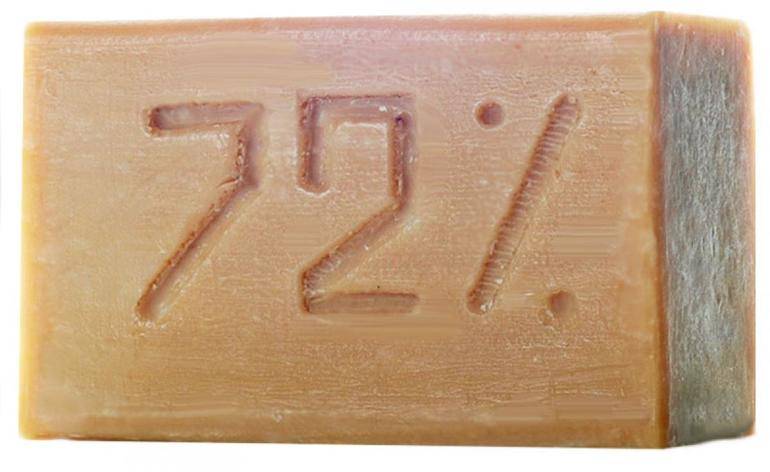
- Laundry soap is a simple product that can be used to remove many contaminants. Not capable of damaging any fabric. Soak the stain with cold water, then treat it on both sides. Let it lie down for a while, then wash as usual. The tool is penny, but in many cases it copes no worse than the expensive advertised chemical compounds.
- Soap solution - to enhance the effect, grated soap must be mixed with baking soda and salt in equal proportions. The composition is left on contaminated clothing for several hours. Copes especially well with stains on cotton.
- Hydrogen peroxide with aspirin is not only medicine, but also irreplaceable helpers in the household. The tablets must be crushed and mixed with a peroxide solution, then applied to a dirty area of clothing. The mixture copes well with stains from fresh berries, rust.
- Table vinegar - quickly removes unpleasant odors, refreshes the color of fabrics. Acetic acid solution is diluted with water and applied to the problem area. The action takes place in a few minutes. Can be used on any fabrics.
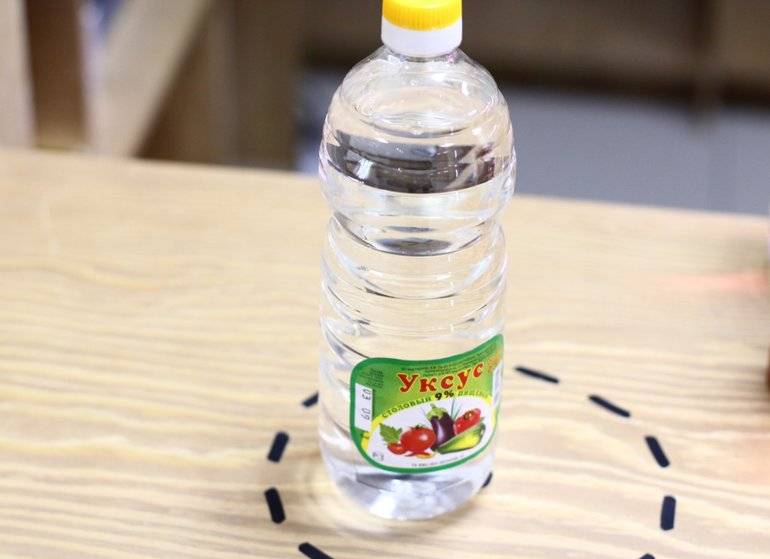
Reasons for the appearance of bitumen stains on the machine
Bitumen stains appear on the body of the car, falling on it from the asphalt surface. The main reasons for this phenomenon lie in the following:
- premature use of the newly repaired road section, when the new road surface has not yet had time to fully form;
- in a hot period of time, asphalt tends to melt under the influence of high temperatures. Resin, which is actively used in road repair and filling holes, is subject to the same process. In combination with the fact that in hot weather the temperature of the car body can reach 80 ° C, bitumen, when it hits a heated paintwork, is very easily incorporated into its structure;
- The reason for the appearance of such contamination is also the fact that tar particles get onto the car body from the wheels of nearby passing cars. It should be borne in mind that the higher the speed of movement on the new road, the further such particles will fly off.
Advice! For to wipe off the bitumen from the car, you need to start this process as early as possible after the contamination has been detected. Fresh dirt (when tar has not yet completely absorbed into the paintwork) is much easier to remove than frozen stains.
Most often, the following elements of the car body suffer from this kind of pollution:
- bumper;
- wheel arches;
- the lower part of the doors;
- thresholds.
There are certain preventive measures that will minimize the risk of bituminous contamination on the car body:
- compliance with the speed limit on the recently repaired section of the road (ideally, the speed should not exceed 50 km / h);
- observance of the distance between cars when driving (this is especially true for trucks, from passing next to which, bitumen can even get on the windshield of the car);
- timely installation of special mud flaps;
- applying a protective coating to the car body.
How to remove blood from clothes
There are many ways to remove blood from clothing at home. To this end, housewives use improvised tools that can be found in the kitchen or in the medicine cabinet. Moreover, it can be delicate things or fabric that cannot be washed. Also, girls are interested in how to clean underpants from blood stains during menstruation. The methods work quickly and efficiently.
Soda
You can clean your favorite clothes with baking soda. To do this, the powder is dissolved in a glass of 0.5 l of cold water. The liquid is poured over the stain and waited for 1 hour. After that, rub the contaminated place with your hands and wash it as a whole.
Peroxide
The drug is actively used for scratches and cuts.
Due to the property of dissolving blood, girls drew attention to him during menstruation, who sometimes encounter unpleasant moments of this state of the body. The menstrual cycle is sometimes painful, and pads do not always protect against leakage.
Therefore, it is recommended that you keep the peroxide handy.
Starch
Powder for making desserts can be used while washing. Especially suitable for items made of delicate materials. To remove the stain, the place is moistened on both sides with plain water. The starch is applied and left for a while. After 40-45 minutes, the gruel is removed, and the thing is washed by hand or in a washing machine.

We cleanse with aspirin
Few people know that a remedy from a home medicine cabinet can remove blood stains from clothes. What a person needs to do:
- The tablet is dissolved in a glass of cold water.
- The place of contamination is treated with a prepared solution.
- Action time - 35 minutes.
- After that, the item is washed in clean water.
The method is especially suitable for cleaning wool products. Aspirin is suitable for removing blood stains from fabrics due to the effectiveness of the method and the speed of cleaning. Usually such pills are always in the medicine cabinet.
We remove with salt
There are two ways to apply it:
- in its original form;
- as a solution.
Cleaning blood-stained items is the same as cleaning with aspirin, starch, or baking soda. All that is required of a person is to apply the composition to the stain and wait a little. Residues are easily washed off with cold water.
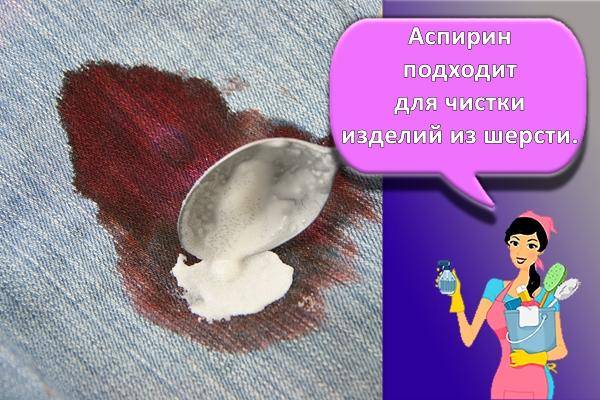
Laundry soap in the fight against stains
The product can be soaked in soapy water. There is another cleaning option. Dirty places are rubbed with soap and immersed in clean water. For maximum efficiency, both options are combined.
Getting rid of the stain remover
The cleaner is sold at household chemical stores. The products have a different volume, so the buyer can choose the one that suits the most. Instructions for using the drug are indicated on the package.
How and how to remove bitumen stains
Why is it difficult to remove bitumen from clothes, and how to do it at all? The gummy petroleum product is firmly embedded in the fabric and is not washed off with water. Bitumen can only be washed with special means. But even solvents don't always remove bitumen from jeans or shoes.Then how to remove the corrosive substance? First you need to remove the excess resin. This is done after solidification so that the oil product does not spread over a large area. If the fabric is dense and strong, the solidified substance is beaten against a hard object and scraped off.
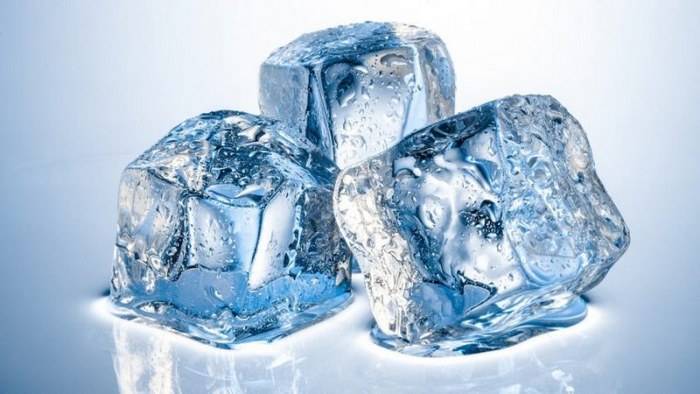
To make the resin harden faster, the product is cooled - placed in a freezer or ice is applied to a layer of bitumen. This way, bitumen can be peeled off both from jeans and from other dense materials, and then the dirty print needs to be washed off. Let's figure out what tools will be useful in this case.
Household chemicals
How to remove bitumen stain remover from the store? There are not many bitumen removers. Chemistry with solvents in the composition will help out, which are effective against various oil products - fuel oil, tar, etc.
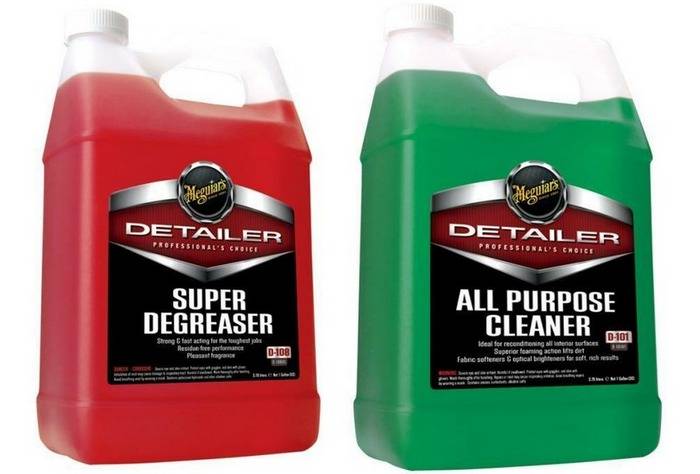
For removing bitumen from clothing, Super DeGreaser is suitable, which is used in car washes. Tar Remover, a professional bitumen stain remover, works in the same way. If these funds are not at hand, you can try out methods from the people.
Folk remedies
It is problematic to clean bitumen with improvised means, but it is possible. As soon as the stain appears, it can be washed off with baking soda. It is not the most effective resin remover, but it is safe and works on small surfaces. How else can you wash off a bitumen stain from clothes:
- lather with tar soap, rub well after 20 minutes, rinse with water and wash;
- mix starch, turpentine and white clay in equal amounts, apply to a cloth, brush off after drying;
- moisten the place of contamination with ammonia, rub with a sponge or cotton pad, rinse.
Petroleum based solvents work best with bitumen tar. How to dissolve dried bitumen depends on the sensitivity of the fabric and the age of contamination. Refined kerosene is considered the most gentle bitumen remover.
What to use?
To remove stains, you can use both special household chemicals and folk cleaning methods.
Consider the most common tools that are used to remove dirt on various materials:
Vinegar essence. It is rarely used to remove stains in their pure form. Most often it is a component of specially prepared solutions for removing contaminants.
Lemon juice or citric acid.
Edible salt.
Laundry detergent can deal with simple and fresh stains. Also, the powder is needed in the final wash after processing with special compounds.
Laundry soap is a gentle stain remover. This soap washes well fresh stains from berries and fruits. It can also be used to soak things before further cleaning.
Soap and stain removers in the form of powder or gel "Antipyatin". This tool is best used for processing things made of natural durable fabrics.
For colored clothing, use "Antipyatin" with extreme caution.
Hydrogen peroxide is suitable for removing stains from white fabrics.
Ammonia can be used as an alternative to hydrogen peroxide. The disadvantage of ammonia is its characteristic pungent odor.

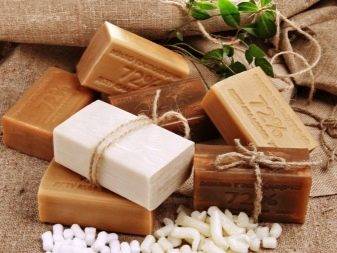
Baking soda is a versatile remedy for most stains. Sodium bicarbonate is safe for your health and can deal with both fresh and old dirt. Soda can be added during washing in its pure form, or special solutions can be made from the substance.
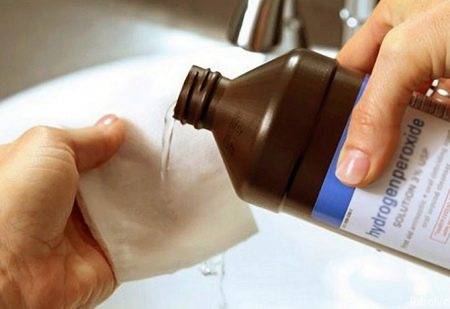
Soda ash copes with various types of contamination more effectively. You can make a gel for washing clothes from sodium carbonate with your own hands, which will not be inferior in quality to household chemicals. To prepare the cleaning agent, you will need laundry soap (0.2 kg), sodium carbonate (0.2 kg) and two and a half liters of water. The process of making the gel is as follows:
- The soap must be grated on a fine grater.Mix the soap shavings with water (one and a half liters) and put the container with the solution on the gas stove. You do not need to bring the mixture to a boil. When heated, the solution must be constantly stirred.
- After the soap shavings are completely dissolved, one liter of water must be added to the heated mixture.
- Continuing to heat the soapy solution over low heat, gradually add sodium carbonate, stirring the mixture thoroughly.
- After the mixture becomes homogeneous, turn off the fire. The solution is left to cool for a day, after which the composition can be poured into a plastic container with a wide neck.
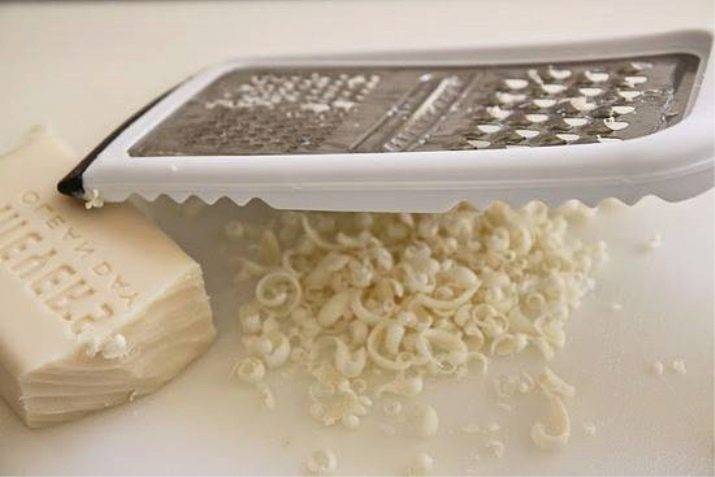
Commercial blood stain removers
Stores sell a ton of products in the form of powders, bleaches and stain removers that help fight biological contaminants such as blood:
- Frau Schmidt is an Austrian liquid stain remover with bile soap. Eliminates not only blood stains, but also fatty ones, as well as oil and wine stains. It does not negatively affect the skin of the hands, it is bought for white and colored linen.
- Vanich is a stain remover for all colored laundry. Active oxygen from its composition helps to cope with chronic blood stains. The tool is added not only to the water, where the laundry is soaked, but also to the dirty stain itself.
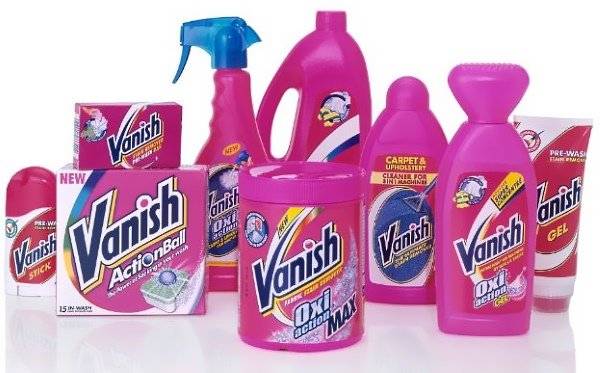
- Ecover is a Belgian stain remover. Contains mineral and natural ingredients, ideal for white and colored clothing. Helps to remove stains from blood, grass, dirt, grease.
- Amway Pre Wash is a stain remover spray that is sprayed directly onto the stain. Copes with blood spots quickly enough.
- Sarma Active is a stain remover that quickly removes grease and blood stains. Add to water when washing in a machine, by hand and on the stain itself.
- Udalix Ultra is a good stain remover, which is sold in the form of a liquid concentrate, pencil, spray, powder. Does not damage fabric and tackles many stubborn stains, including blood.
It is almost impossible to insure clothes, linen and household items from blood contamination. But there are options for how to eliminate such complex biological stains without a trace. If it was not possible to cleanse your favorite thing from old pollution, do not despair and throw it away. Cute hand embroidery or discreet applique will help to hide stains from a blood stain.
How to remove yellowed stains from clothes
Yellow spots appear not only from dirt when worn, but also from improper washing and long-term storage of white things. Fresh yellowed areas are treated:
- laundry soap;
- hydrogen peroxide - soaked in a detergent, then wipe the dirt with peroxide;
- aspirin - 2 tablets per tablespoon, rub in the mixture after soaking.
Old stains on white things are dealt with by the following methods:
- oxalic acid - a teaspoon in a glass of water;
- citric acid - 2 teaspoons per 200 milliliters;
- yellowing is treated with gasoline, then with ammonia.
Natural white fabrics can be boiled in bleach (Persol).
Varieties and methods of replacing them
The choice of stain remover depends on the composition of the stain. The principle of action is the destruction of organic or inorganic compounds and removal from the tissue.
Chlorine
Chlorine compounds such as Whiteness are used to bleach white cotton and linen products. At home, it can be replaced with a solution of bleach. Enough 30 grams per 1000 milliliters.
The use of a home stain remover has the same limitations and disadvantages as the professional method:
- premature wear of the fabric;
- yellowness on a white background;
- odor and solution toxicity;
- use on fabrics with a dense, natural structure.
The use of chlorine compounds requires skin protection and ventilation.
Peroxide
Special stain removers contain oxygen, which oxidizes organic components of pollution.At home, replacements for store stain removers are hydrogen peroxide and soda ash. A pharmaceutical disinfectant will also replace chlorine-based bleach.
Perhydrol when interacting with water decomposes into oxygen and carbon dioxide. Soda ash softens the water, making it easier to clean the fabric. For greater effect, the water temperature should be 70-80 degrees. For silk, wool, the temperature is reduced to 30-50 degrees. Do not use home stain remover on colored fabrics
Chemicals require careful handling, excluding contact with mucous membranes, in the gastrointestinal tract
Acid
Professional stain removers contain oxalic and hydrofluoric acids. They are used to remove iron oxides from cotton items. High toxicity and aggressiveness limits their use.
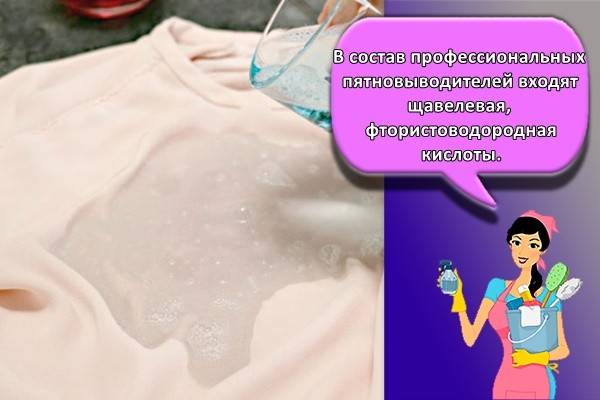
Table vinegar, artificial citric acid, lemon juice have similar properties for interaction with inorganic substances.
How to wash in a washing machine
Automatic washing machines create ideal conditions for washing white fabrics. When choosing a mode, take into account the composition of the fabric and the manufacturer's recommendations.
Mode selection
Most modern fabrics have a mixed composition. When choosing a mode, they are guided by that part of the components that require the most careful attitude.
With a known composition of the fabric, select the appropriate pointer on the typewriter. It is better to wash materials in which there is even a small part of synthetic components in the "Synthetics" mode.
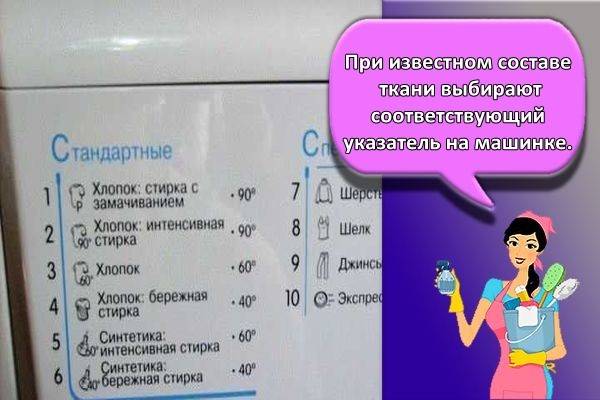
Temperature
The temperature is selected by the composition of the fabric and the index on the labels. Fundamental rules:
- flax - 40-60 °;
- cotton - up to 90 °;
- synthetics and mixed fabrics - 40-60 °.
Do not exceed the recommended temperatures, white things may turn yellow and deteriorate.
How to remove blood stains from clothes - old, dry, menstrual
It is not so easy to remove traces of blood.
If it is wrong to remove blood stains, then the thing will be spoiled.
It is important to know how to properly deal with blood spots, what remedies can be used
Blood eats into tissue very quickly and penetrates into fibers. The blood contains iron, which in a matter of seconds will dye the tissue in a bright color.
Many stain removers can be found on store shelves, but sometimes, even they are powerless. What then is to be done? In this case, traditional methods of removing biological pollutants can help.
Several rules for dealing with blood stains
There are four rules to help you deal with blood stains. The recommendations are relevant for both fabric surfaces and interior surfaces.
Start removing the stain immediately. Have you noticed that the blood left a mark on your favorite blouse, trousers or bedspread? Act immediately! The sooner you start removing stains, the easier it will be to remove them.
Dried stains will be difficult to remove even with good quality stain removers.
Only wash stains with cold water. Hot water will curdle the protein. Washing blood in hot water may leave a noticeable yellow stain.
Leave in cold water for a while. Add some stain remover and cover with cold water. After this procedure, it will be much easier to remove the blood.
If the stain is on the carpet, blanket, sofa, or armchair, apply the stain remover to the stain, lather and leave it on for a while. So that the remedy has time to "work".
How to deal with fresh stains?
How to remove a stain that has just appeared on your favorite blouse? Well, if the stain was noticed immediately, then it is much easier to remove it.
First you need to wash away the trail of blood, try to remove it from the surface of the fabric as much as possible. Wash with detergent. A small bloody stain can be removed with soap, if a trace still remains, try using: starch, hydrogen peroxide or a stain remover.
Removing blood stains with baking soda.
Baking soda is great for removing blood stains from dense fabrics. The disadvantage of such a stain remover is considered to be slow action.
- Collect a bowl of cold water.
- Add 50 g of baking soda.
- Soak the contaminated item. You can soak the whole thing completely, or just the soiled part.
- Leave for a few hours, then send to the washing machine.
Removing blood stains with hydrogen peroxide
Peroxide is an excellent stain remover for light-colored canvases. It is better not to use peroxide on dark clothes. Excellent for removing bloody stains from suede shoes and bags. You can remove blood on a light carpet in this way.
- Moisten a cotton swab with hydrogen peroxide.
- Soak the bloody stain with liquid.
- Foam the stain.
- Repeat the manipulations if necessary.
Removing blood stains with starch
This method works well for delicate fabrics that cannot be machine washed.
- Prepare a starch solution.
- Apply to dirt.
- Leave it on for a few hours.
Removing blood stains with ammonia
Salmon can remove stubborn blood stains. Can be used on light-colored canvases.
- Prepare 1 liter of chilled water, add 50 g of ammonia.
- Soak the stain in the solution.
- Leave it on for a few hours.
- Wash with detergent powder.
Removing blood stains with table salt
This method works great for almost all types of fabrics.
- Add 50 g of table salt to one liter of chilled water.
- Leave the contaminated item for several hours.
- Wash with detergent.
Washing soap
Washing crumbs are great at fighting blood from menstruation.
- Send dirty clothes to a basin of cold water.
- After an hour, change the water and leave for another couple of hours.
- Wash bloody stains with soap.
- Send to the washing machine.
How to remove blood stains from leather surfaces
For this we need shaving foam. You can use this method only if you are sure that the product is made of genuine leather. If you immediately notice blood on the surface, rinse under running water. If you see an old stain, then clean it as much as possible with a damp sponge.
- Spread the product over the stain.
- Wait 1 hour.
- Remove leftover funds.
- Wash with soapy water, dry with a dry towel.

